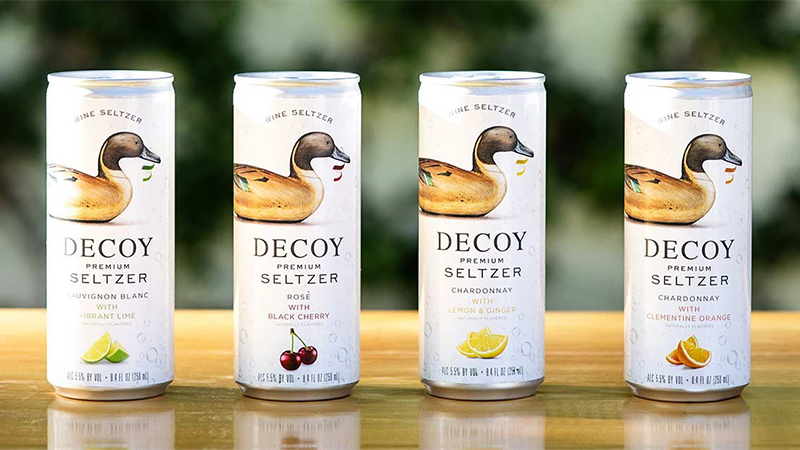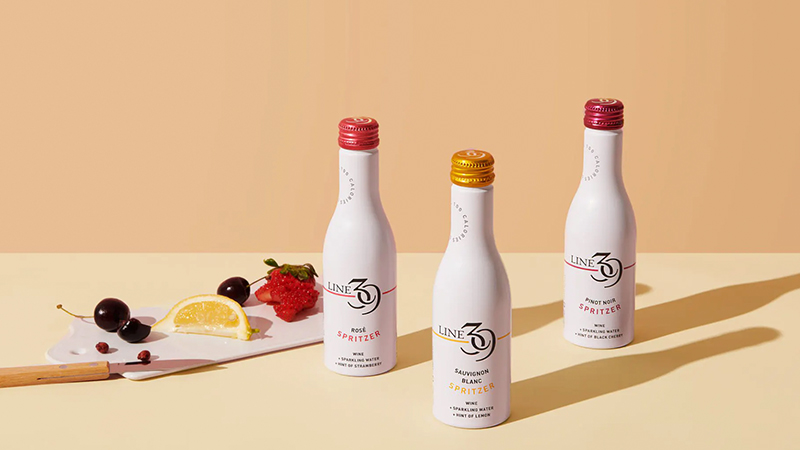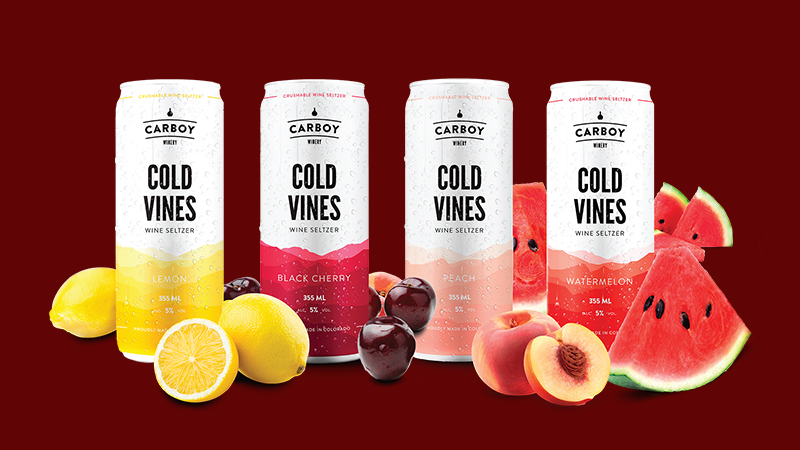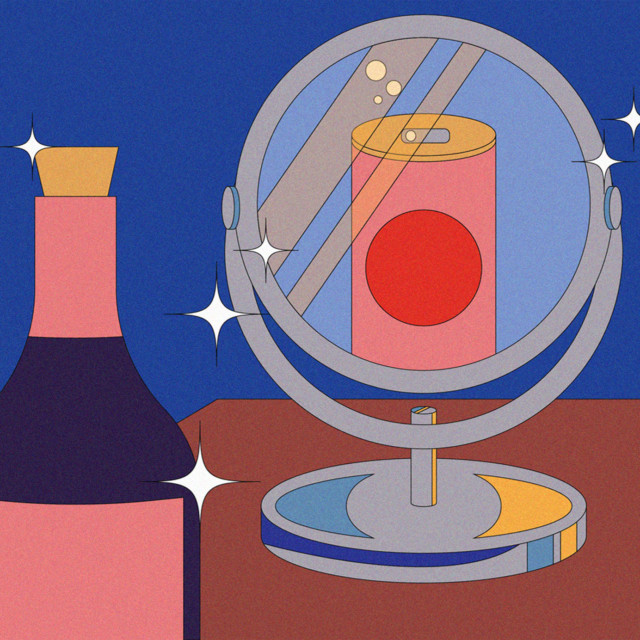VinePair is ringing in the Holiday Cheers with a spotlight on the bottles we’re gifting (and hoping to receive) and a look inside some of our favorite holiday traditions and recipes — from elevated eggnog to all things bubbly. Plus, we’ll be reflecting on the past year in the beverage industry and shifting our focus to the drinks trends we expect to see in 2022.
Those of us who remember the wine cooler craze of the 1980s (looking at you, mirror!) saw this spritzer-like combination of white wine and fruit flavorings skyrocket from relative obscurity to become a fizzy phenomenon. In 1984, wholesalers shipped an estimated 15 million cases of the stuff — nearly six times more than the amount sold the previous year. In ‘84, wine coolers comprised nearly 7 percent of total wine sales volume in the United States, and experts expected the category to double its share in 1985. The cooler’s cachet turned out to be short-lived, however. Following years of declining popularity and a massive excise tax spike that led wine cooler producers to switch to cheaper, less appealing malt bases, the category’s sales share totaled less than 1 percent by 2006.
Now, as wineries look for ways to attract a younger demographic and get in on the lower-alcohol, better-for-you beverage trend, spritzy wine-based drinks are making a comeback. This time around, “premium” is the name of the game.
In February last year, Napa Valley-based Duckhorn Wine Company launched a line of varietally labeled wine seltzers under the Decoy label. Featuring flavors such as Chardonnay with Lemon and Ginger and Sauvignon Blanc with Vibrant Lime, the 250-milliliter canned seltzers sell for $14.99 per 4-pack — just a couple bucks less than a 12-pack of White Claw.
“I think this helps to broaden our market base and to encourage consumers that are more familiar with seltzers to jump in and try a premium, elevated experience,” says Decoy’s head winemaker, Dana Epperson. “Then maybe they will fall into drinking some of our other products.”
It can also work the other way around, she notes, with Decoy wine drinkers adding seltzer to their lives.
Epperson wasn’t always a fan of the wine seltzer concept. When winery executives first came to her with the idea, she needed some convincing. “I honestly didn’t know too much about seltzers and I don’t really personally consume them,” she says, “so it was a little bit of a surprise to me.”
But after tasting samples from the flavor development company Duckhorn would be working with, Epperson began to come around. “I was surprised how much I actually liked the product,” she says. “What was so interesting to me was the difference between malt-based and wine-based seltzers. I couldn’t detect that aftertaste of malt, which I think is the reason I really just don’t like other seltzers in the market.”
Having studied food science in college, she was also intrigued by the product development process. For more than a year, Decoy’s winemaking team tested various alcohol percentages, carbonation levels, flavorings, and blends before arriving at four seltzer varieties for the initial launch.
“We found that it was really challenging to perfect the flavors so they were not overpowering or artificial-tasting,” Epperson says. Another hurdle was creating a consistent product made from wine, a beverage that varies with each vintage.

“We have to make the base wine as consistent as possible, because we can’t actually change the flavor [due to Food and Drug Administration regulations] once it’s locked in,” Epperson says. Rather than using fruit from different vineyards and regions, which would vary in character, Decoy sticks to larger blocks within the same vineyards.
Grape sourcing is similar to that of the brand’s wines, with heavier reliance on Central Coast fruit. Epperson looks for grapes with a bright, clean profile and mature flavors that allow picking at lower Brix levels to promote lower alcohol and higher natural acidity.
“We want something that’s going to be varietally characteristic of our Decoy wine,” she says, “but we also want the flavorings to shine through. We want it to be a happy balance.”
Line 39, owned by O’Neill Vintners and Distillers in California’s Central Valley, also took a premium approach to developing a wine-based beverage. Rather than going in the seltzer direction, the company created a spritzer, which is typically more wine-forward in its composition and style. The Line 39 Spritzers, launched in March 2021, come in Sauvignon Blanc, Pinot Noir, and Rosé varieties, and a Chardonnay version is on the way. The drinks are packaged in 250-milliliter aluminum bottles at $13.99 per 4-pack.
“The incredible growth of hard seltzer brands is evidence that lighter, more sessionable beverages are truly important to consumers,” Jurga Krastinaityte, brand manager at O’Neill Vintners and Distillers, says. “We want to meet that need, and we believe that our spritzers create new opportunities for consumers to enjoy Line 39 wines and inspire new excitement about the wine category.”

Ensuring that the spritzers have varietal character was an important part of the brand’s strategy. Sourcing fruit from across California, including Pinot Noir from Monterey County and North Coast Sauvignon Blanc, the company’s winemakers create base wines using Line 39’s standard wine protocols, then blend in sparkling water and a hint of natural fruit flavor.
While Krastinaityte says she doesn’t view wine spritzers as off limits to older generations, she says they are particularly appealing to younger consumers, who tend to gravitate toward drinks with lower calorie counts and portable, single-serve packaging. Line 39 spritzers are made with no added sugar, are low in alcohol at 5 percent ABV, and each serving has 100 calories.
Hybrid Seltzers Join the Game
California producers aren’t the only ones getting into the high-end seltzer business. Colorado-based Carboy Winery launched its Cold Vines Wine Seltzer line in July 2021, inspired by the producer’s foray into making sparkling wines. Carboy CEO Kevin Webber realized that the base wine for the winery’s bubbly could also be used to make wine seltzer, with fruit concentrates added for flavor.
“We thought it would be a great way to have shared cost of goods and introduce something to a market that is hungry for something like this,” Webber says. “We noticed that most seltzers are malt- or neutral grain spirits-based, and there’s not a whole lot of differentiation.”

Aiming to play on the same field as Decoy, Webber priced the 355-milliliter slim cans at $13.99 per 4-pack. The seltzers are made from cold-hardy, Colorado-grown hybrid grape varieties including Brianna, Aromella, and Vignoles. As production grows, Carboy will source additional fruit from its newly planted Washington State vineyards.
“There are a lot of varieties that are more approachable [than traditional vinifera] and a little more fun,” says Webber. “I think we’re capturing millennials and Gen Z, and people who are looking for something new and innovative out of wine that is in step with what’s happening in craft distilling and craft beer.”
Unlike Decoy and Line 39, Carboy doesn’t specify grape varieties on its packaging. “What we’re doing is mostly just trying to make the best white wine base,” he says, “and then calling out where the fruit’s coming from.”
Forecasting the Category’s Future
Carboy produced 36,000 cans of seltzer for its inaugural run in 2021, and plans to increase production to 85,000 for the next batch as the winery expands from tasting-room-only sales to target quality-driven retail outlets like Trader Joe’s and Whole Foods.
“We’re still growing pretty slowly, because we’re not sure where the market’s going with seltzer,” says Webber, referring to industry reports that consumers are losing interest in hard seltzer. “Is this something that’s really hot now but is going to fizzle out?”
But for wine producers that don’t need to move millions of cases of seltzer or spritzer to survive, the risks are fairly minimal. In addition, a recent survey suggests that hard seltzer is gaining momentum in on-premise venues.
Undeterred by the slowdown in sales growth for large malt-based seltzer brands, Decoy has new varieties in the works based on customer feedback. “All of the varietals are popular,” Epperson says, “but I feel like rosé could be a real market driver. So we might make another spin on that, or potentially the Chardonnay.”
E. & J. Gallo-owned Barefoot Wine, which introduced canned wine spritzers in 2016 and added hard seltzer to the lineup in 2020, is optimistic about the category’s future.
“We expect it to continue growing,” Dan Vu, director of marketing at Barefoot, says. “If there’s one thing we’ve learned about Barefoot fans, it’s that they’re always open to trying something new.”
Idaho’s Ste. Chapelle winery, which followed the 2018 launch of its canned Ste. Chapelle Spritz with lower-alcohol, Moscato-based versions in 2020, is also betting on wine-based fizzy beverages. However, says Brad Mayer, vice president of public relations at parent company Precept Brands, “The number of large dominant players might narrow down over time, similar to the box wine category.”
This story is a part of VP Pro, our free platform and newsletter for drinks industry professionals, covering wine, beer, liquor, and beyond. Sign up for VP Pro now!
